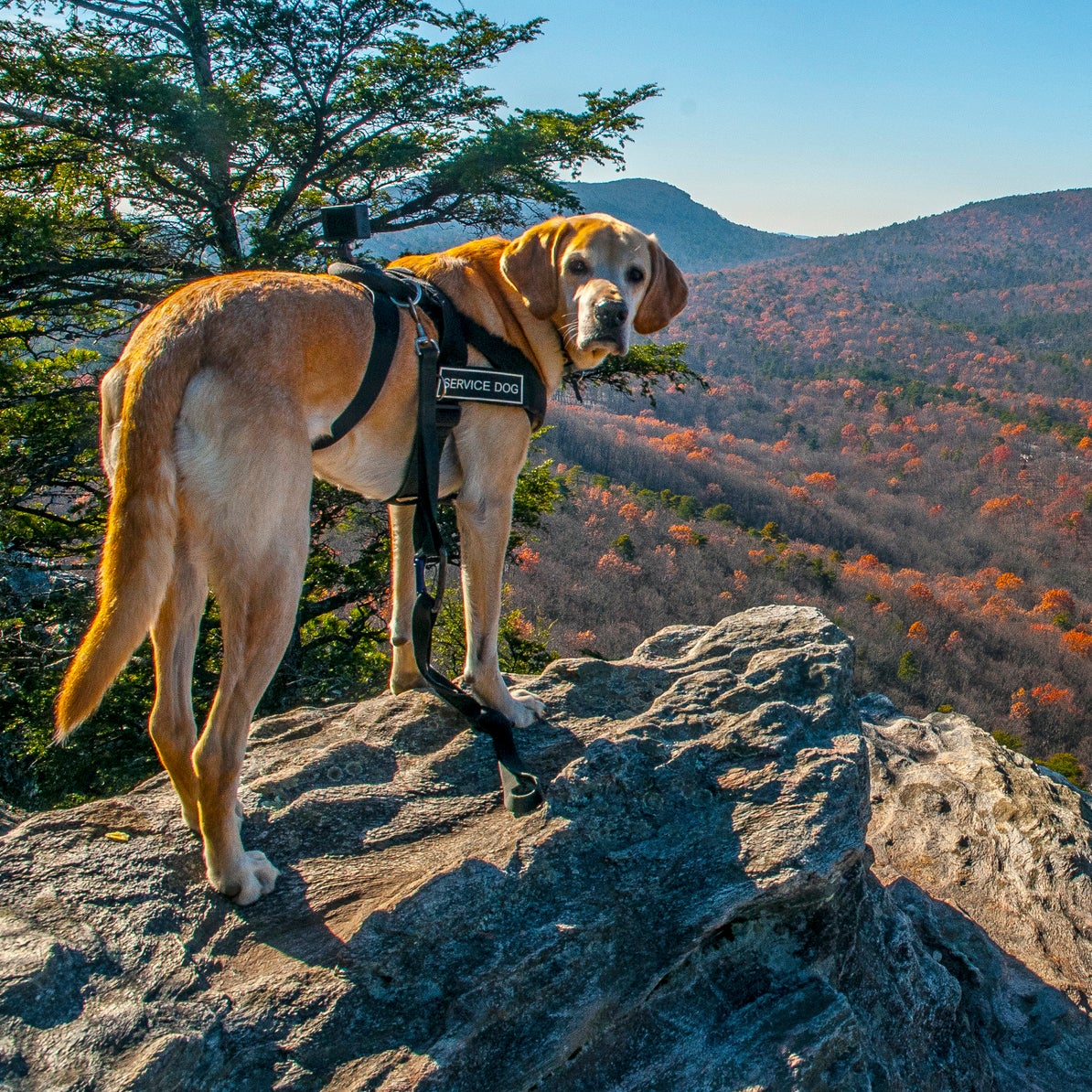Some triathletes with disabilities race with human teammates for support. An athlete with a vision impairment, for example, may swim and run while tethered to a sighted athlete and then ride a tandem bike with a guide. Another athlete with cerebral palsy might race with a partner who pushes a racing wheelchair.
For some athletes with disabilities, that teammate has four legs and fur. Service animals can significantly improve the safety and quality of life for people with disabilities, and the offers certain protections for people who require the assistance of a service dog.
But how does the role of a service dog fit into a triathlon training or racing environment? The question came up at the recent USA Triathlon Together We Thrive Summit on diversity, equity, inclusion, and access. Here, we summarize the insights of Keri Serota, executive director of and athletes with disabilities coordinator for the Bank of America Chicago Marathon, and Chris Murphy, ADA specialist with a member of the U.S. Paracycling National Team, and two-time Paralympian.
Related:
What Is a Service Dog?
Under the ADA, a service dog is a canine that has been individually trained to perform tasks or do work for someone with a disability.
“For example, somebody who’s blind, there’s the classic seeing eye dog, who can provide the way finding for the blind person,” Serota says. “But dogs can also do a lot of other things. For a person with epilepsy, a service animal can be trained to understand the certain signals that their handler’s body is giving to be able to actually warn that person that they’re about to have a seizure. They will perform tasks such as jumping up on them and licking their face to say, ‘Hey, get safe. You’re going to have a seizure in just a moment.’”
Service dogs can be utilized for a number of physical and mental disabilities, including blindness, deafness, multiple sclerosis, epilepsy, arthritis, and post-traumatic stress disorder. Service dogs that are trained to aid people with these disabilities are protected by the ADA, meaning they can go almost anywhere their person goes—even into most places with ordinances that ban pets from entering (such as restaurants or hospitals).
Do Emotional Support Animals Count as Service Animals?
The most important element in defining a service dog is that they have been trained to perform a task directly related to a person’s disability, such as alerting a deaf person. Dogs that generally help keep people calm or provide a sense of well-being—also known as emotional support animals—do not have this specific training. They are not the same as service animals and as a trained service dog.
“The ADA says a support animal is nothing more than a pet,” Murphy says. “It’s just something that makes you happy just by being there. It doesn’t actually do anything, though. So that’s the difference between a service animal and a support animal, is that actual work or task has to be performed by the animal.”
If a business or event is unsure about whether a dog is a service animal or emotional support animal, they are allowed to ask two questions:
- Is this dog required because of a disability?
- What task or work is this dog trained to perform?
It is not legal to ask about the person’s disability or request to see medical documentation.
It’s crucial that people do not claim an emotional support dog is a service animal. In addition to being against the law, misrepresenting an untrained animal as a service dog can create a stigma against true and necessary service animals.
Can I Race with My Service Dog?
Some running races allow service dogs to participate. There are service dogs completing 5Ks, obstacle course races, and even marathons alongside their humans. But that doesn’t mean all races allow service animals—nor are they required to.
Though the ADA allows service animals to enter most public places, there are exceptions. This is what is known as “fundamental alterations.” The ADA does not require organizations to modify policies, practices, or procedures if doing so would “fundamentally alter” the nature of the goods, services, programs, or activities provided to the public. In other words, if having a service animal present would disrupt the event or cause a safety hazard, race directors are allowed to refuse the animal.
The race cannot refuse the person with a disability, however. They still need to provide some form of accommodation for that athlete, Serota says. “We do allow an athlete who is visually impaired to have up to two guide runners at a marathon distance race,” she says. “One year, we got a request from somebody who wanted their guide dog to guide them through the marathon. That conflicted with our policy. We weren’t denying them accommodation; it’s just the accommodation we offered was a human guide, but not a dog.”
Race directors can also remove a previously approved service dog from the course at any time if the animal starts behaving badly. For everyone’s safety, service dogs need to be highly trained to perform their tasks without disturbing or harming others in public. “If it’s out of control, if it’s not housebroken, if it’s barking incessantly, they can be asked to leave,” Murphy says. “Animals should be trained in basic obedience. If they’re not behaving in a service animal way, then you can ask the animal to leave, but not the person.”
Can I Bring My Service Dog to a Triathlon?
It’s less likely that a service animal will be allowed to race alongside their person at a triathlon. In addition to the obvious health and safety concerns of having a dog in an open-water swim or running alongside a bike, there is also the consideration of whether the animal can actually perform the task while doing such activities.
“One of the examples that comes up pretty frequently in our office is somebody wanting to bring their dog into the swimming pool. If the dog can’t perform a task in the pool, the dog doesn’t belong in the pool,” Murphy says. “People with service animals don’t necessarily have the right to bring a dog into a pool unless they can honestly say that the dog can perform that work or tasks they’re trained to do within the pool.”
I’m a Race Director and Unsure How to Handle Questions About Service Dogs at My Event. Who Can I Talk To?
There are many resources for making races accessible to people with disabilities. A good place to start is the . You may also contact your , where you can connect with ADA experts like Murphy to answer questions for free and provide guidance on ADA laws and accessibility.
RELATED:


